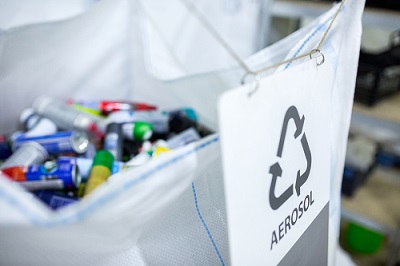EHS Topic of the Month: Universal Waste Management
 One of the overlooked and misunderstood categories of hazardous wastes are universal wastes. As the term indicates, these are items so commonly used that the agency assumes all companies and households will have at least one type present.
One of the overlooked and misunderstood categories of hazardous wastes are universal wastes. As the term indicates, these are items so commonly used that the agency assumes all companies and households will have at least one type present.
The Environmental Protection Agency's (EPA) universal waste regulations streamline hazardous waste management standards for federally designated universal wastes, which include: batteries, pesticides, mercury-containing equipment and bulbs (lamps), and empty spray paint cans. The EPA regulations govern the collection and management of these widely generated wastes.
Here are steps that foundries can take to properly manage used universal waste lamps:
- Establish a process for managing used fluorescent lamps. Designate a dry area within your facility to store used lamps where they will not be broken. Make sure that employees know who to call and what to do when a lamp burns out or is broken. Lamps should be stored in a way that avoids breakage. Containers must be closed, structurally sound, and compatible with the contents of the lamps. They must show no evidence of leakage, spillage, or damage that could cause leakage or releases of mercury or other hazardous constituents. Fluorescent lamps can be stored in the original boxes, in boxes from replacement bulbs, or in specially manufactured containers designed for storing bulbs until they are ready for recycling.
- Do not tape lamps together or use rubber bands. Close and securely seal boxes/containers with tape. Three-inch PVC tape is recommended. Store them in a dry place, and label them with one of the following: "Universal Waste – Lamp(s)," "Waste Lamp(s)," or "Used Lamp(s)."
- IMPORTANT: Lamps must be recycled within one year!
Special Issues: Aerosol Cans
 If the can contains ANY hazardous waste (paint, flammable) and is sent for disposal, both the contents of the can and the can itself are subject to regulation. To dispose of the aerosol can as nonhazardous, the can must be "RCRA empty" (all liquid that can be is removed by normal means and have no more than one inch or 3% by weight of residue remaining), and the can itself must not qualify as a hazardous waste.
If the can contains ANY hazardous waste (paint, flammable) and is sent for disposal, both the contents of the can and the can itself are subject to regulation. To dispose of the aerosol can as nonhazardous, the can must be "RCRA empty" (all liquid that can be is removed by normal means and have no more than one inch or 3% by weight of residue remaining), and the can itself must not qualify as a hazardous waste.
If the aerosol can is holding a compressed gas, it is unclear whether the act of venting to render the can empty would constitute treatment. This question must be answered by the appropriate EPA Region or authorized state. To be nonhazardous, the can must be empty (and that means pierced to insure that it is empty of ALL contents) and the can MUST be sent to a recycler as scrap.
• Fluorescent bulbs • Spray paint/spray cans • Certain batteries
• Some switches and electronic components
